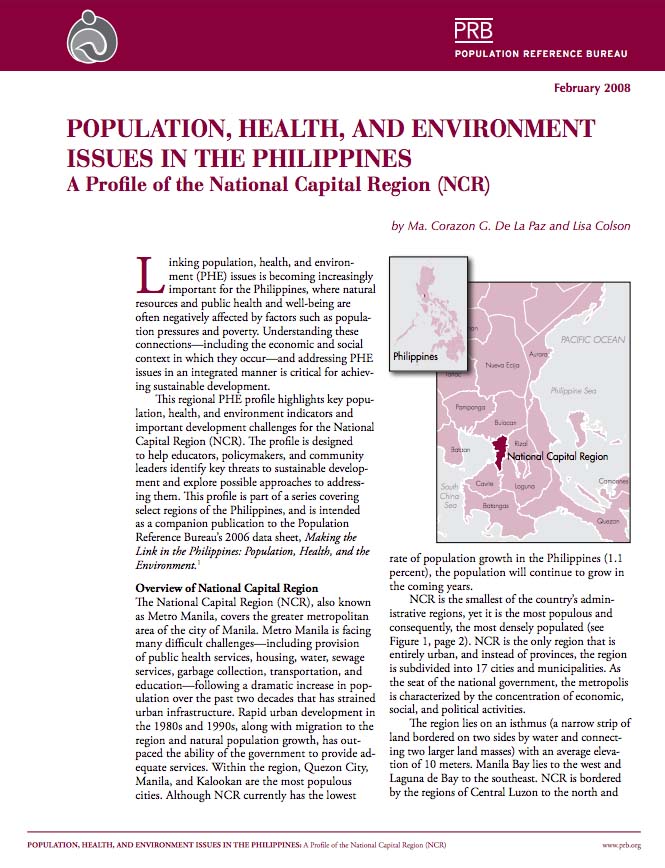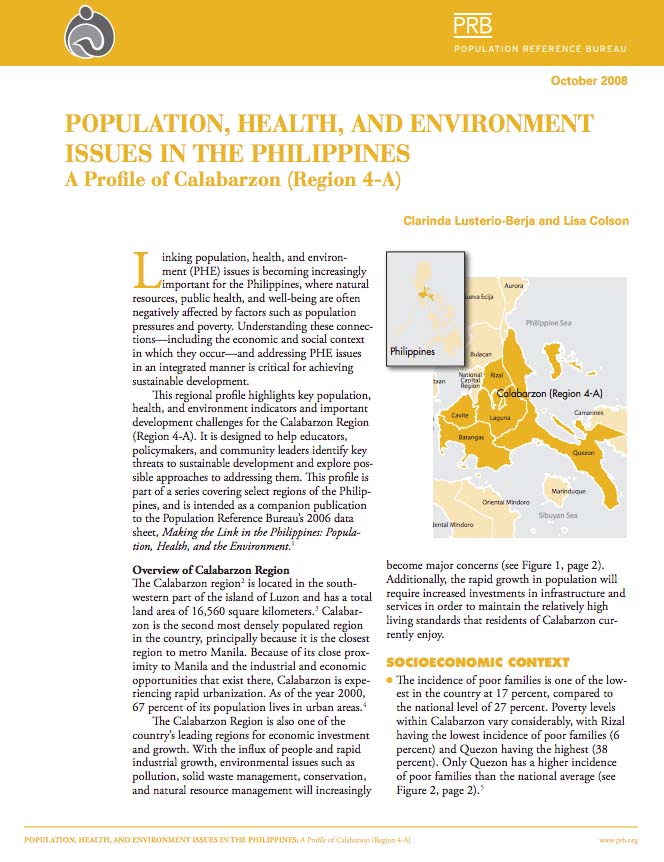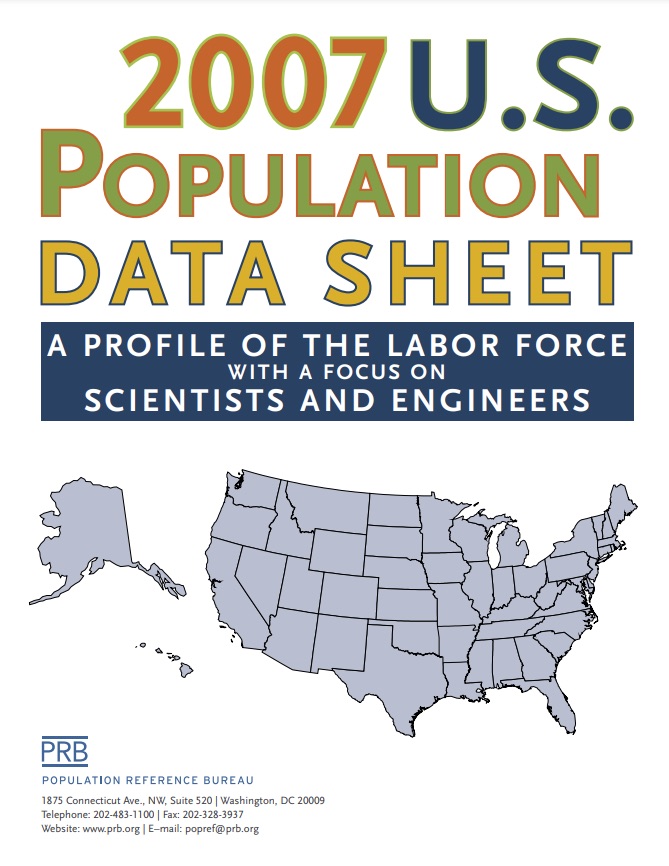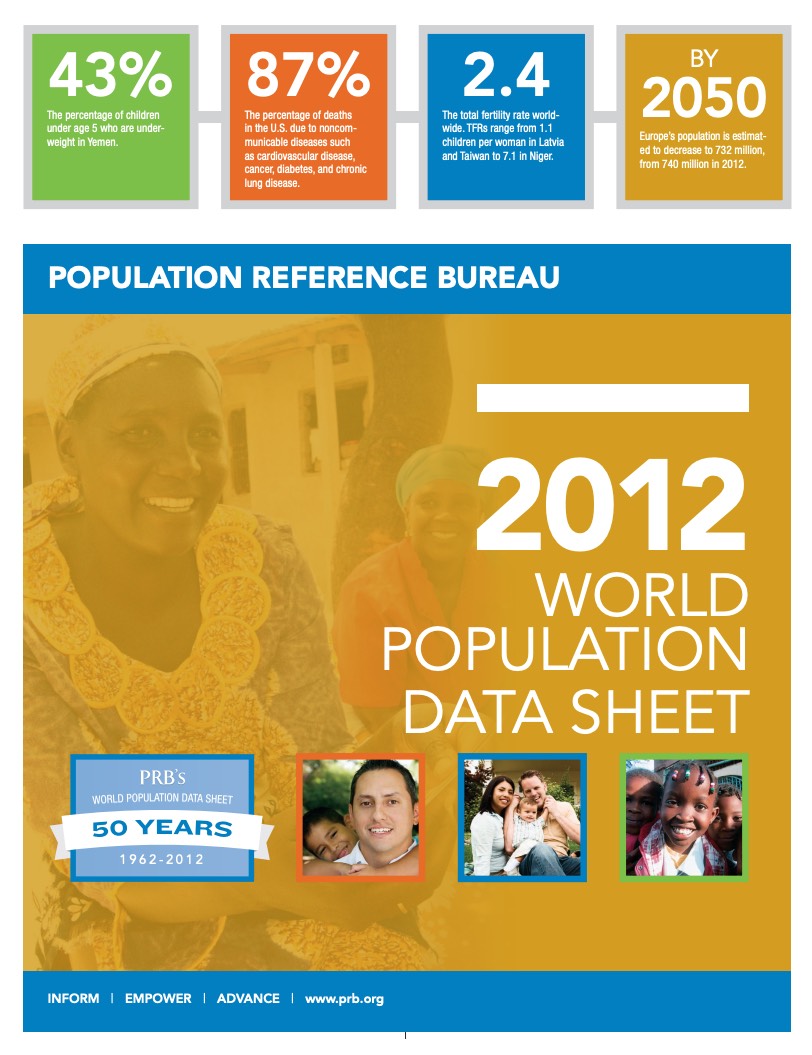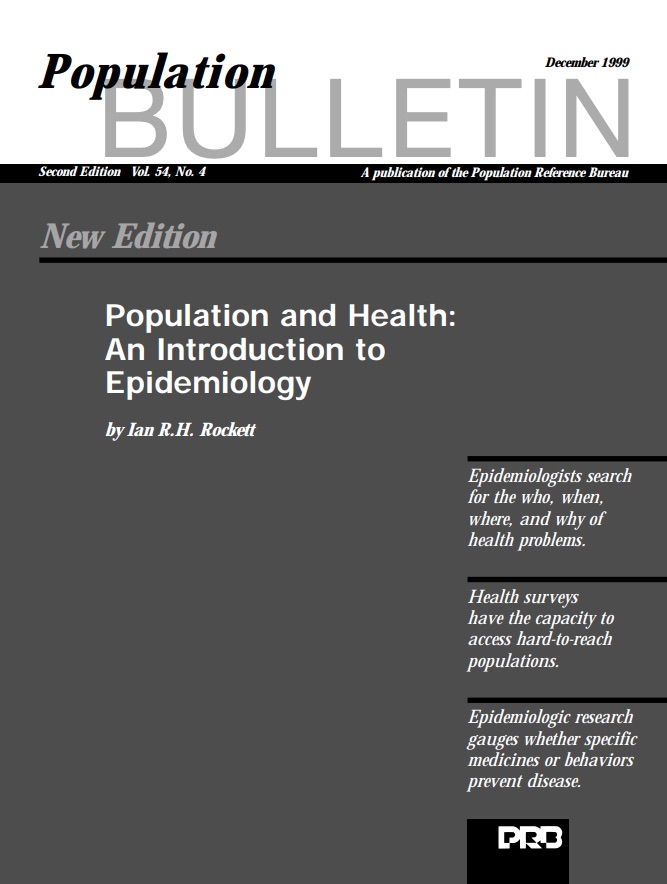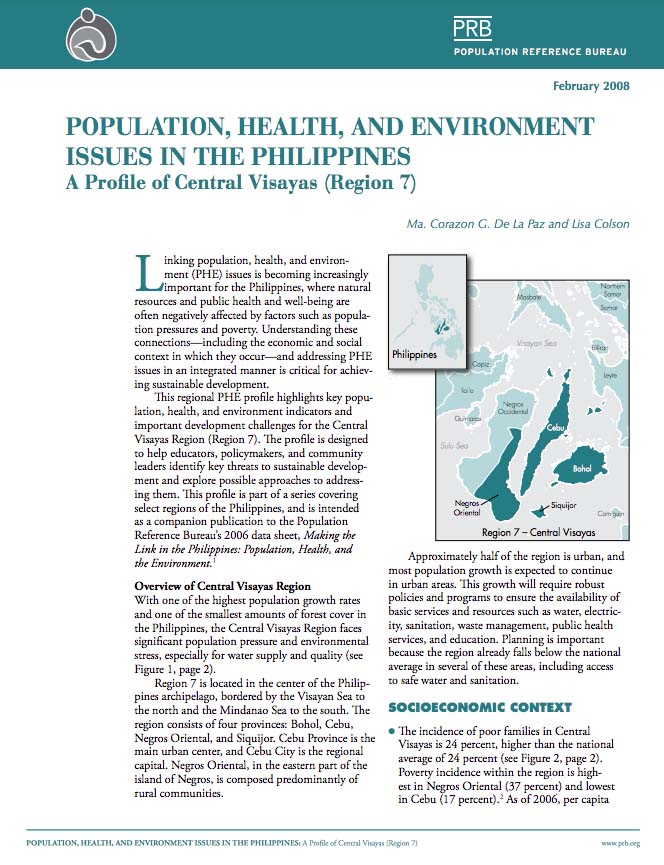Report. Population, Health, and Environment Issues in the Philippines: A Profile of the National Capital Region
(2008) Linking population, health, and environment (PHE) issues is becoming increasingly important for the Philippines, where natural resources and public health and well-being are often negatively affected by factors such as population pressures and poverty.

